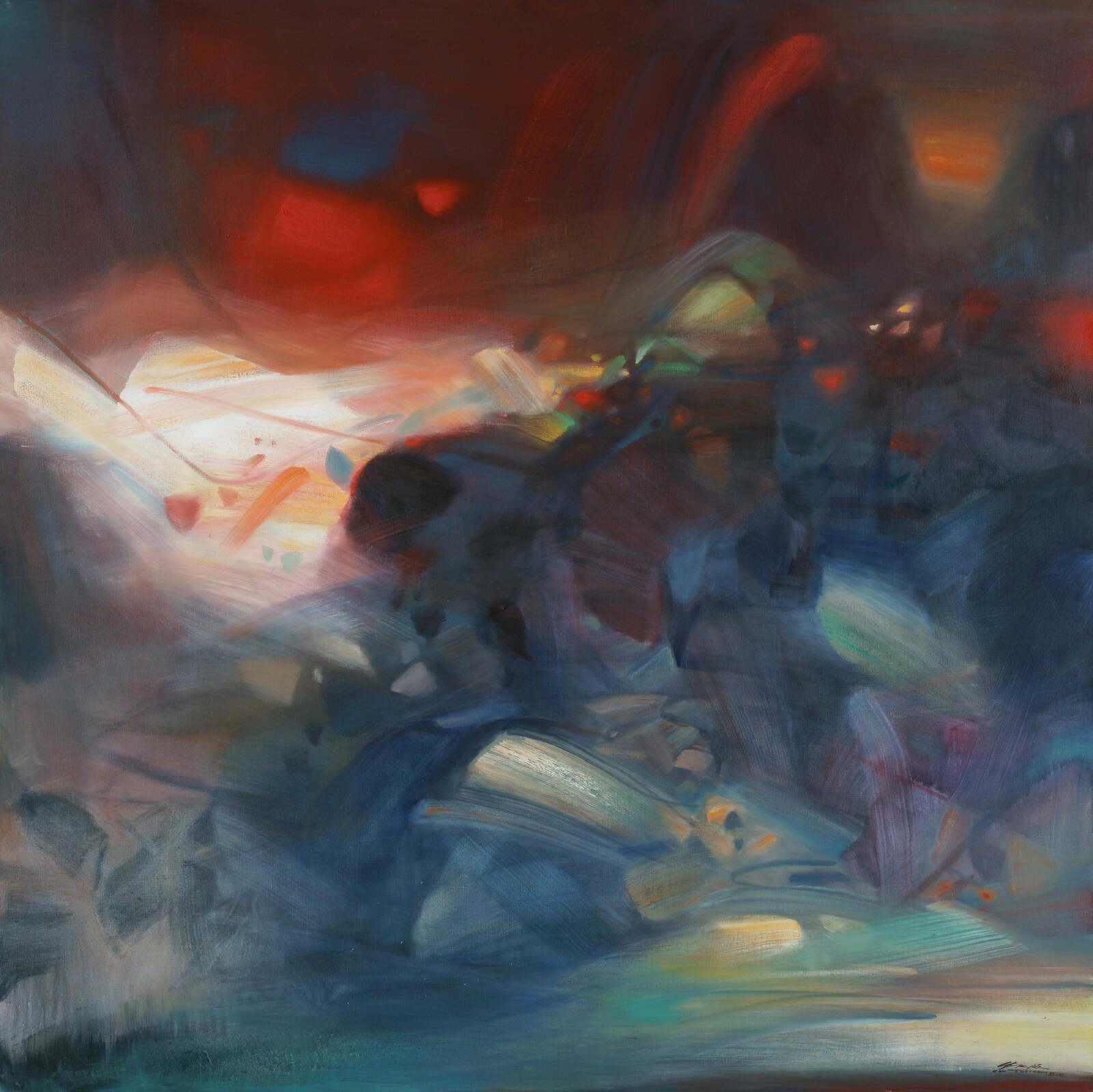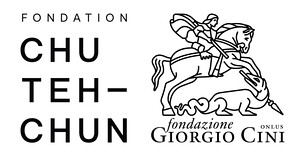In Nebula
Retrospective exhibition
April 20–June 30, 2024
In Nebula, a retrospective of the work of Chu Teh-Chun (1920–2014), takes place at the Fondazione Giorgio Cini from April 20 to June 30, 2024, on the occasion of the 60th Internation Venice Biennale.
Curated by art historian Matthieu Poirier and in partnership with the Fondazione Giorgio Cini, it is held on the island of San Giorgio Maggiore, opposite Piazza San Marco, in Venice. This is the most important exhibition devoted in recent years to this Franco-Chinese painter, a key player in gestural abstraction, whose work forms a link between Hans Hartung, Mark Rothko, and Helen Frankenthaler.
Boasting exceptional loans, including one from the Musée d’Art Moderne de Paris, the exhibition presents some fifty emblematic paintings mostly produced from 1955 onwards, the year Chu settled permanently in Paris, among the Western avant-garde. The exhibit unfolds in reverse chronological order tour from recent large formats to the earliest small formats, displayed in a panoptic way on three levels of an exceptional site, which resonates with the uncertain space of Chu’s pictorial nebulae.
Its goal is to renew our view of Chu’s work. Critical and institutional interpretations have long been focused on the recognition of an East-West duality. While this remains relevant today, it should not prevent us from perceiving, with the benefit of hindsight, the exceptional aesthetic singularity of his universe, teeming with historical resonances, whose echoes can be found in even the most contemporary creations.
A new monograph on the artist by Matthieu Poirier, published by Gallimard, accompanies the event (available from 4 April).
The artist and his work
Chu Teh-Chun (1920–2014) is a major figure in the history of gestural abstract painting.
Born in China into a family of art lovers, he received an academic education that was open to modern Western aesthetic ideas. Then came the Second Sino-Japanese war, family tragedy, the loss of nearly all his early works, and finally exile first to Taiwan, where he taught art, in 1949, then in 1955, to Paris, where he settled, started a family, and devoted himself to his studio work. This peaceful home witnessed the emergence of his tortured abstraction.
His painting results from a sensuous, unpremeditated confrontation with the surface of the canvas. Nebulae and maelstrom appear, their complex polychromy shaped by powerful chiaroscuro effects, almost without recourse of relief or impasto and systematically rejecting geometry.
The space of his canvases, out-of-scale and stubbornly non-figurative, is a fluid matrix into which our vision is projected and immersed, causing us to lose all spatial and semantic reference points.
To better understand his work, we need to identify the sources of his penchant for painting (classical and modern, Chinese and Western) and of his ability to translate the mnemonic sensation of nature and landscape, the dynamic essence of gesture and the emergence of light. Finally, the perspective, through parallels and analogies with other practices, reveals the singularity, intensity, and constancy, over nearly six decades, of an abstraction underpinned by the organic logic of life and landscape, by the movement of natural phenomena, between eruptions, lightning, storms, water currents and other cosmogonic revolutions.
Chu found himself somewhat on the margins of his era, due to his reserved personality and a principled rejection of any commercial strategy. The aim of this exhibition and the accompanying monograph are therefore, with historical hindsight and given the considerable success his work has enjoyed in recent years, to examine its essential aesthetic and help dispel some of the misunderstandings that have surrounded its reception.
Stay connected
Please check the Foundation’s website for regular updates on our program.
For further information please contact communication [at] chu-teh-chun.org.









